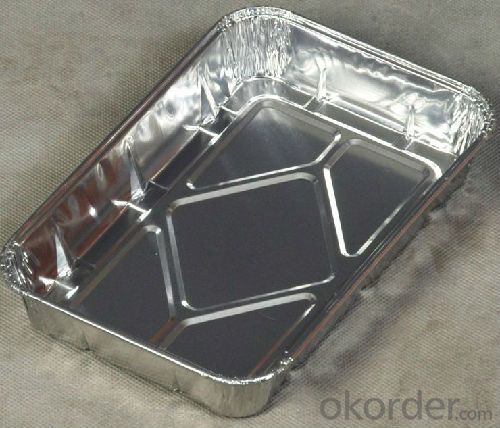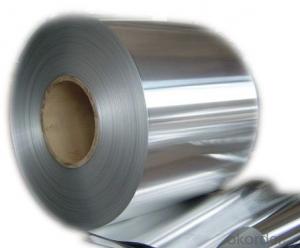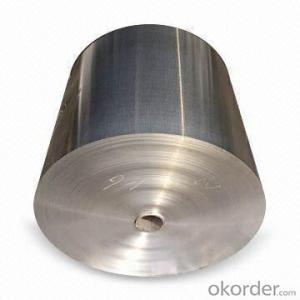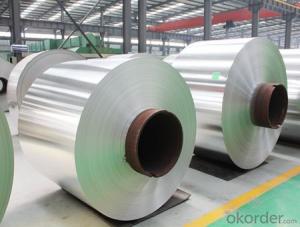ALUMINIUM FOIL CONTAINERS Hot Demanded Good Price
- Loading Port:
- Shanghai
- Payment Terms:
- TT OR LC
- Min Order Qty:
- 5 m.t.
- Supply Capability:
- 2000 m.t./month
OKorder Service Pledge
OKorder Financial Service
You Might Also Like
1, Aluminium Foil Container Description:
Aluminium foil is widely sold into the consumer market, often in rolls of 500 mm (20 in) width and several metres in length. It is used for wrapping food in order to preserve it, for example, when storing leftover food in arefrigerator (where it serves the additional purpose of preventing odour exchange), when taking sandwiches on a journey, or when selling some kinds of take-away or fast food. Tex-Mex restaurants in the United States, for example, typically provide take-away burritos wrapped in aluminium foil.
2,Main feather of Aluminium Foil Container:
1, Made of advanced pollution-free aluminum, 100% food safe;
2,Environmentally friendly, recoverable and recyclable
3,High-temperature sterilization
3, Aluminium Foil Conatiner Images:



4,Aluminium Foil Container Specifications:
Top Out:160x110mm
In Out:145x95mm
Bottom:125x75mm
Height:35mm
5,FAQ:
a.What is monthly capacity
---CNBM is one stated own company and our monthly capacity is about 2000tons.
b. Now which countries do you export your goods?
---Now we export to South East Asia,Africa, North America,South America ect.
- Q:Can aluminum coils be used in the production of cans?
- Yes, aluminum coils can be used in the production of cans. Aluminum coils are commonly used in the manufacturing process of cans due to their lightweight, durability, and corrosion resistance. These coils are typically shaped into sheets that are then formed into cans, making them a popular choice for the production of beverage and food containers.
- Q:What is the profit of aluminium coil gate?
- Market prices are almost transparent, the price can be said to earn a installation costs, two people installed, then, in addition to costs, profits of about 4 thousand and 500
- Q:How are aluminum coils used in the aerospace industry?
- Aluminum coils find extensive application in the aerospace industry for various purposes. The construction of aircraft structures is one primary area where aluminum coils are heavily utilized. Aluminum, being a lightweight material with an exceptional strength-to-weight ratio, is an ideal choice for the aerospace industry, where weight reduction is of utmost importance. These coils are often transformed into sheets or plates and employed in the fabrication of aircraft fuselage, wings, and other structural elements. Apart from their structural uses, aluminum coils also find application in the manufacturing of heat exchangers and cooling systems within aircraft. Aluminum's high thermal conductivity and resistance to corrosion make it an outstanding material for dissipating the heat produced by engines and electronic systems. These coils can be molded into tubes or fins, enabling efficient heat transfer and ensuring optimal performance of the aircraft's cooling systems. Another significant application of aluminum coils in the aerospace sector lies in electrical uses. Aluminum, being a good conductor of electricity, is utilized in the production of electrical wiring, connectors, and cables. These components are crucial for the proper functioning of various systems within an aircraft, including power distribution, communication, and navigation systems. Furthermore, aluminum coils are also employed in the construction of fuel tanks and hydraulic systems in aircraft. The corrosion resistance and ability of aluminum to withstand high pressure and temperature make it a reliable choice for these critical elements. By shaping and welding the coils, tanks or piping systems can be created to store and transport fuel and hydraulic fluids effectively and safely. In conclusion, aluminum coils play a crucial role in the aerospace industry by providing lightweight, robust, and corrosion-resistant materials for various applications, including structural, thermal, electrical, and fluid management purposes. Their versatility, durability, and exceptional performance characteristics make them indispensable in the design and construction of modern aircraft, ensuring safety, efficiency, and reliability in air transportation.
- Q:What are the different edge treatments available for aluminum coils?
- There are several different edge treatments available for aluminum coils, each with its own unique advantages and applications. 1. Mill Finish: This is the most basic edge treatment, where the edges of the aluminum coil are left as they are after the manufacturing process. This treatment is typically used for applications where aesthetics are not a priority, such as industrial or construction applications. 2. Trimmed Edge: In this treatment, the edges of the aluminum coil are trimmed to remove any sharp or jagged edges. This ensures safer handling and reduces the risk of injury during fabrication or installation. 3. Deburred Edge: Similar to the trimmed edge treatment, the deburred edge involves removing any burrs or sharp edges from the coil's edges. This is particularly important for applications where the aluminum coil will come into contact with other materials or surfaces, as it helps to prevent scratches or damage. 4. Rolled Edge: With this treatment, the edges of the aluminum coil are rolled to create a smooth, rounded edge. This not only enhances the overall appearance of the coil but also provides added protection against corrosion and damage. 5. Beveled Edge: In a beveled edge treatment, the edges of the aluminum coil are cut at an angle to create a sloping edge. This is often used in architectural applications where a sleek and modern look is desired. The beveled edge can also facilitate easier welding or joining of the aluminum coil. 6. Hemmed Edge: This treatment involves folding or bending the edges of the aluminum coil to create a hem-like finish. Hemmed edges provide increased strength and rigidity to the coil, making it suitable for applications that require added durability or structural integrity. 7. Painted or Powder Coated Edge: In this treatment, the edges of the aluminum coil are painted or powder coated to match the color or finish of the rest of the coil. This is commonly done to achieve a seamless and uniform appearance in applications where the coil's edges are visible. Overall, the choice of edge treatment for aluminum coils depends on the specific requirements of the application, including both functional and aesthetic considerations.
- Q:Are aluminum coils prone to corrosion?
- Aluminum coils have a tendency to corrode, as aluminum is a reactive metal that readily develops a protective oxide layer upon contact with oxygen. Nevertheless, certain environmental elements like moisture, salt, or corrosive substances can compromise this oxide layer. Consequently, corrosion may gradually manifest on the surface of aluminum coils. To mitigate this risk, regular maintenance and appropriate care, such as cleaning and applying protective coatings, can be beneficial.
- Q:Can aluminum coils be used in high-radiation environments?
- Yes, aluminum coils can be used in high-radiation environments. Aluminum has good radiation resistance and can withstand high levels of radiation without significant degradation or damage. It is commonly used in applications such as nuclear power plants and aerospace industries, where radiation exposure is a concern.
- Q:Are aluminum coils compatible with different joining methods?
- Yes, aluminum coils are compatible with different joining methods. Some common joining methods for aluminum coils include welding, soldering, brazing, and mechanical fastening. The choice of joining method depends on the specific application and requirements.
- Q:Hello, I'd like to ask you a question. Can the aluminum coil be continuously pressed and cooled by kerosene?
- It's better not to use 0#. I'm sorry, I didn't see it a few days ago
- Q:Calculate the specific heat of aluminum (in calories).mass of aluminum25.0 gmass of water23.2ginitial temperature of aluminum98.0Cinitial temperature of water20.0Cfinal temperature of water33.0Cround to three decimal places, do not include units.
- Heat gained by water = heat lost by aluminum Heat = H mass = m specific heat =c change in temperature = dT H = mcdT mcdT for water = mcdT for Al (23.2)(1.00)(13) = (25.0)(c(Al))(33-98) c(Al) = (23.2)(1.00)(13)/(25.0)(65) = 0.186 This value is just a bit below the known value of specific heat for aluminum, where c = 0.217 cal/g.C
- Q:How are aluminum coils cut to size?
- Aluminum coils are typically cut to size using specialized coil slitting machines. These machines have rotating circular blades that make precise cuts along the length of the coil. The coil is fed through the machine, and the blades cut the aluminum into the desired width. The cut pieces are then collected and further processed or used for various applications.
1. Manufacturer Overview |
|
|---|---|
| Location | |
| Year Established | |
| Annual Output Value | |
| Main Markets | |
| Company Certifications | |
2. Manufacturer Certificates |
|
|---|---|
| a) Certification Name | |
| Range | |
| Reference | |
| Validity Period | |
3. Manufacturer Capability |
|
|---|---|
| a)Trade Capacity | |
| Nearest Port | |
| Export Percentage | |
| No.of Employees in Trade Department | |
| Language Spoken: | |
| b)Factory Information | |
| Factory Size: | |
| No. of Production Lines | |
| Contract Manufacturing | |
| Product Price Range | |
Send your message to us
ALUMINIUM FOIL CONTAINERS Hot Demanded Good Price
- Loading Port:
- Shanghai
- Payment Terms:
- TT OR LC
- Min Order Qty:
- 5 m.t.
- Supply Capability:
- 2000 m.t./month
OKorder Service Pledge
OKorder Financial Service
Similar products
New products
Hot products
Related keywords






























